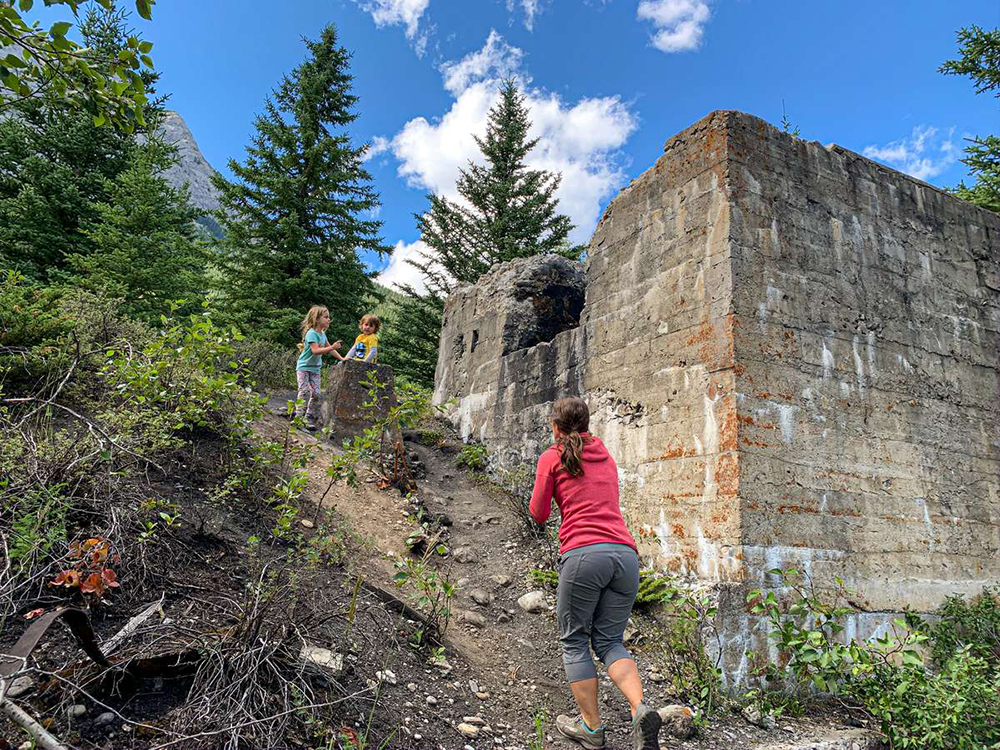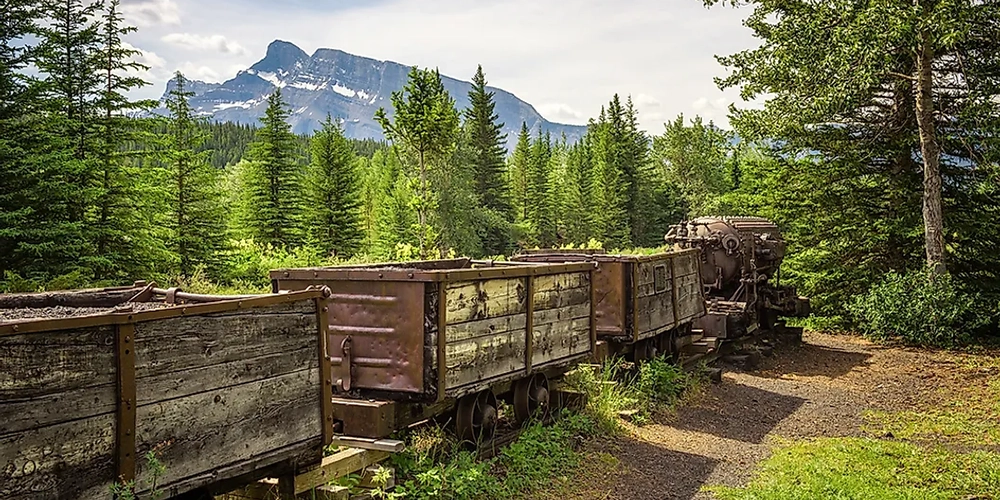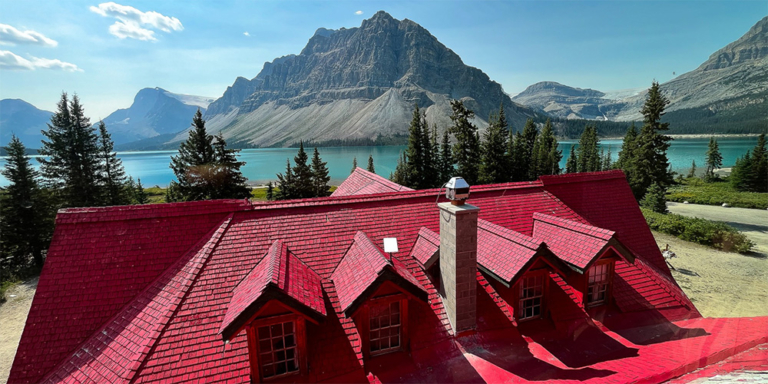Most people who go to Banff go for the show-stopping scenery and the chance to see wildlife.
But did you know that Banff offers rich lessons in history as well?
Hidden away just minutes from Banff town are decaying buildings and industrial remains that are silent witnesses to the region’s rich history.
The ghost town of Bankhead, known colloquially as “The Twenty-Year Town,” is located on the Minnewanka Loop and is open to the public for exploration.
Bankhead crumbles away a little more each year, but it was once a vibrant home for some of our province’s heartiest pioneers.
Bankhead’s story began in the early 20th century when the Canadian Pacific Railroad established it as a company town.
Developers thought the area had good prospects for coal mining, and the town sprung up rapidly from nothing in 1903.
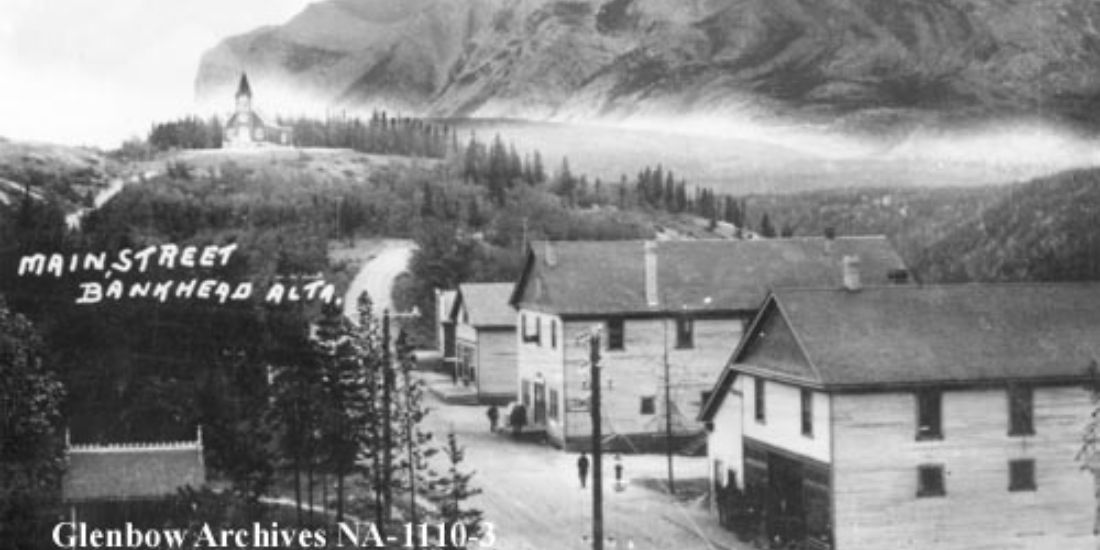

A Multicultural Town
With the demand for coal rising, Bankhead flourished. By 1905, it boasted a school, shops, community buildings, and many residential homes.
Unlike most wild-west mining towns, the town had running water, electricity, and tennis courts!
It became a hub of activity, attracting families from across the region and creating hundreds of jobs in the mining industry.
At its peak, nearly 300 men worked underground, another 150 laboured above ground, and about 1,000 other people lived in town, including the families of those workers.
It was also an exceptionally multicultural town.
Residents came from a wide range of cultures. For example, there were Russian, German, Irish, Italian, British, Czechoslovakian, American, and Francophone families, recounted author Ben Gadd in his book Bankhead: The Twenty-Year Town.
However, accepting diverse cultural backgrounds was limited to those of European descent.
Racial Bias
Sixty Chinese workers, a few with families, also lived in town. All were brought to Canada to sort coal for meagre wages.
‘The Chinese kept (or were kept) apart in every respect,’ Gadd wrote. ‘Each morning, the Chinese walked in single-file to their dirty jobs in the tipple. In the afternoon, they returned to their shacks …without the benefit of the company wash-house. Somehow, in those drafty shanties, they kept warm and clean.


The bilingual Chinese boss, known to the townspeople as “Slippy” (his real name was Chow Hee), was the one real exception to this strict divide. He was the main communicator between the Chinese workers and the company heads.
However, the longer people lived near each other, the more they began appreciating each other’s cultures.
The kids were the first to bridge that divide.
‘The few children who were allowed to visit (or did so on the sly) found the Chinese to be quite likeable. They presented the children with small gifts: Chinese litchee nuts, paper flowers, and – oh, boy – firecrackers! The First New Year’s blowout behind the slack piles surprised the town. After that, the event always drew a crowd.’ wrote Gadd
But for the small amount of communication between the town’s diverse residents, a lot more was happening between workers and their employers.
Funerals Became a “Nuisance”
The challenges of coal mining in the Banff mountains, including dangerous conditions and unstable coal deposits, quickly became a real issue.
The mining operation in Bankhead was often fatal.


Because of how often people were injured or dying on the job, Bankheadians became known as a nuisance in Banff because so many funerals were held in the neighbouring town.
“Bankhead residents felt that if they lost a fellow worker or friend, they had the right to have a wake. They would get as drunk as humanly possible in remembrance of the person who was lost. Residents of Banff didn’t really like this – they were sick of walking by these people passed out in the gutter,” wrote Jacqueline Louie.
Why were Bankheadians being buried in Banff, you ask?
Well, because there happened to be more cultural crossover between Bankheadians than they thought!
The town’s heavy Irish and Chinese populations held superstitions that being the first to be buried in a new cemetery would lay a curse on the rest of your family…and the idea seemed to catch on.
Eventually, near the time the town fell apart, they finally created a cemetery.
One Chinese worker was the first to be buried…until his family quickly had his remains excavated and sent home. Not on their watch!
The only one who ever stayed buried in Bankhead was, ironically, a beloved dog, and its remains lay to rest to this day.
A Labour Issue And Crappy Coal
Coupled with the high danger and low wages, the workers underwent many strikes.
The strikes may have been accommodated except for one thing.
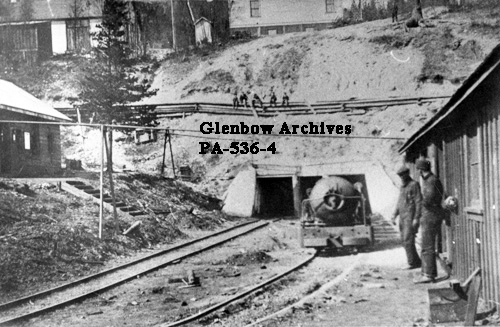

The coal in Bankhead was crap.
Often found in areas that were folded and faulted, it was already a mess to retrieve. When it finally reached above ground, the coal was so brittle and delicate that most turned to dust immediately when exposed to air.
The crappy coal and the worker’s strikes led to Bankhead’s dramatic downfall.
Following one last strike in 1922, the mine closed.
Bankhead’s fate was sealed, and families began abandoning the town, leaving behind a collection of crumbling buildings that still exist today.
Today visiting Bankhead is like stepping back in time. The town, located on the slopes of Cascade Mountain near Lake Minnewanka, is accessible via a trailhead parking lot.
Hikers can follow a loop trail past the town’s most historic buildings, including the Lamp House, Power House, Briquette Building, Boiler House, and the ruins of the Chapel.
Each building tells a story of Bankhead’s heyday and eventual decline, offering visitors a glimpse into the lives of its former residents.
As you wander among the ruins, you can’t help but marvel at the resilience of those who once called this remote corner of Alberta home.
